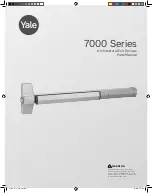
Table S3: VHC-50 Temperature Rise Over Gas-fired Furnace (°F) – 5:1, 2:1 and On/Off Models
Air Volume (CFM)
250 MBH
300 MBH
350 MBH
400 MBH
2,500
75.2
90.3
2,600
72.3
86.8
2,700
69.7
83.6
2,800
67.2
80.6
94.1
2,900
64.9
77.8
90.8
3,000
62.7
75.2
87.8
3,100
60.7
72.8
84.9
3,200
58.8
70.5
82.3
94.1
3,300
57.0
68.4
79.8
91.2
3,400
55.3
66.4
77.5
88.5
3,500
53.7
64.5
75.2
86.0
3,600
52.3
62.7
73.2
83.6
3,700
50.8
61.0
71.2
81.3
3,800
49.5
59.4
69.3
79.2
3,900
48.2
57.9
67.5
77.2
4,000
47.0
56.4
65.8
75.2
4,100
45.9
55.1
64.2
73.4
4,200
44.8
53.7
62.7
71.7
4,300
43.7
52.5
61.2
70.0
4,400
42.8
51.3
59.9
68.4
4,500
41.8
50.2
58.5
66.9
4,600
40.9
49.1
57.2
65.4
4,700
40.0
48.0
56.0
64.0
4,800
39.2
47.0
54.9
62.7
4,900
38.4
46.1
53.7
61.4
5,000
37.6
45.1
52.7
60.2
5,100
36.9
44.3
51.6
59.0
5,200
36.2
43.4
50.6
57.9
5,300
35.5
42.6
49.7
56.8
5,400
34.8
41.8
48.8
55.7
5,500
34.2
41.0
47.9
54.7
Use caution in shaded areas.
Values above are calculated at sea level.
Temperature rise = Sea level temperature rise / (1−Elevation (ft.) x 0.0000334)
Gas inlet pressure required for natural gas minimum 5” w.c., maximum 13.5” w.c.; for propane minimum 11” w.c., maximum 13.5” w.c.
High altitude kit required for elevations over 2,000 feet.
VCES-VHC-IOM-1F – VHC-36, -42 & -50
92


































